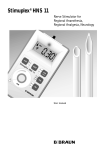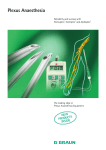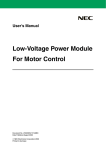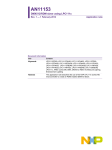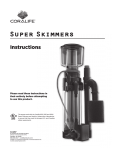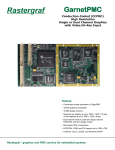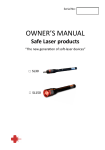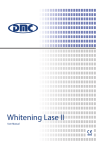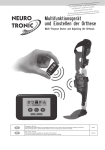Download User Manual
Transcript
For Peripheral Regional Anesthesia model: KNL2 NERVE LOCATOR User Manual 26/03/2014 compliant Almanar for Electronic Components Meets IEC 60601-1:2005 MDD93/42/EEC Manufacturer: ALMANAR for Electronic Components 3rd Advisors’ Building Algaber St., Madkor, Haram 12111, Giza, Egypt Website: www.almanar.com.eg Tel/Fax: +20-2-3583-5215 E-mail: [email protected] Product Website: www.NerveLocator.com European Authorized Representative: EC REP OBELIS S.A Registered Address: Bd. Général Wahis, 53 1030 Brussels, Belgium. Office Address: Avenue de Tervuren, 34, bte 44 1040 Brussels, Belgium. www.obelis.net Tel: +3227325954 Fax: +3227326003 E-mail:[email protected] All rights reserved for Almanar Revision: KNL2_manual_2R10 Warning: KINDI Nerve Locator KNL2 may only be used in applica ons for which this product is intended. Law restricts this device to sale by or on the order of a physician. EC REP certificates: Following European Authorized Representative Center certificates: 2 Table of Contents Our European Authorized Representative Center certificates: ............... 3 Table of Contents ..................................................................................... 2 Preface ..................................................................................................... 4 CE certificate: ........................................................................................... 5 1. Principles of peripheral electrical nerve s mula on ............................ 6 1.1 Principles ........................................................................................ 6 1.2 Intended Use: ................................................................................. 7 1.3 Indica ons ...................................................................................... 8 1.4 Contraindica ons ............................................................................ 9 1.5 Warnings ........................................................................................ 9 1.6 Constant voltage or constant current ............................................ 14 2. Descrip on of the device ................................................................... 15 2.1 Default parameters and Modes ..................................................... 15 2.2 Overview of the KINDI Nerve Locator KNL2 ................................... 16 2.2.1 Drawings for KINDI V2.X: ........................................................ 16 2.2.2 Drawings for KINDI V2.x connecting scheme:.......................... 17 2.3 Start up ......................................................................................... 18 2.3.1 Checks before start-up ........................................................... 18 2.3.2 Running Screen ...................................................................... 18 2.4 General technical descrip on ........................................................ 19 2.4.1 Keypad interface .................................................................... 19 2.4.2 Plug Connec ons.................................................................... 20 2.4.3 Sound ..................................................................................... 20 2.4.5 LED ......................................................................................... 20 2.4.6 Backlight on the LCD display ................................................... 20 3 3. Opera on of the KINDI Nerve Locator V2.x........................................ 21 3.1 Switch ON/OFF.............................................................................. 21 3.1.1 Switch ON: ............................................................................. 21 3.1.2 Switch OFF: ............................................................................ 21 3.1.3 Automa c switch OFF: ........................................................... 21 3.2 Selec ng the Pulse Dura on ......................................................... 22 3.3 Selec ng the Pulse Frequency ....................................................... 22 3.4 Current Resolu on ........................................................................ 22 3.5 Loca ng/Mapping ......................................................................... 22 3.6 Modes of current adjustment ....................................................... 23 A. Manual mode (default): .............................................................. 23 B. Auto mode (option): ................................................................... 23 3.7 Ba ery .......................................................................................... 23 3.8 Addi onal informa on - Menu info ............................................... 23 4. Maintenance, Notes, and Op ons...................................................... 24 4.1 General notes ............................................................................... 24 4.1.1 Language................................................................................ 24 4.1.2 KNL2 descrip on & data summery ......................................... 24 4.1.3 Device parameters ................................................................. 25 4.1.4 Interna onal Standards met .................................................. 25 4.1.5 Special technical features ....................................................... 25 4.2 Maintenance and safety checks .................................................... 26 4.2.1 Cleaning and Disinfec ng the KNL2 ........................................ 26 4.2.2 Storage and shipping condi ons: ............................................ 26 4.2.3 Change the ba ery................................................................. 27 4.3 No ces, warranty .......................................................................... 27 4.5 Accessories ................................................................................... 28 4.6 Specifica ons & Product Informa on ............................................ 28 KINDI Nerve Locator V2.x User manual Preface 4 Thank you for purchasing KINDI Nerve Locator KNL2, the easy device to operate, so we provided you with a straightforward array of all the functions you need in any peripheral nerves blocking or mapping. The following chapters describe the operation of KINDI Nerve Locator KNL2. The use of the locating needles required for performing locating is described in the instructions for use accompanying the needles, which are not part of this user manual. Chapter 1 describes the unique op onal func on of “ Auto-Loc/Map “ for automatic current pulses adjustment by needle or mapping-pen approach to the intended peripheral nerve. For your study of its operational fundamentals, we recommend that you have a KINDI Nerve Locator KNL2 with all of its accessories at hand and functional so that you can learn about the functions in practical exercises. It is helpful to simulate the patient with a wet paper tissue or a small sponge soaked in saltwater. The saline solution is required to produce electrical conductivity. The device may only be operated in compliance with the user manual. If you have further questions, please don't hesitate to contact us. Regards, ALMANAR, Giza, Egypt Almanar for electronic components 5 CE certificate: KINDI is CE compliant and conforms with medical devices direc ve "MDD 93/42/EEC" under Class (IIa) ( still under auditing to be certified by 3EC ) Almanar is cer fied for EN ISO13485:2012: KINDI Nerve Locator V2.x User manual 6 1. Principles of peripheral electrical nerve stimulation Chapter 1 1.1 Principles Neuromuscular function is monitored by evaluating the muscular response of muscle to supramaximal electrical locating of a peripheral motor nerve. The reaction of a single muscle fiber to a signal follows an all-or-none pattern. By contrast, the response of the whole muscle depends on the number of muscle fibers activated. If a nerve is stimulated with sufficient intensity, all muscle fibers supplied by the nerve will react, and the maximum response will be triggered. After administration of a neuromuscular blocking drug, the response of the muscle decreases in parallel with the number of fibers blocked. The reduction, in response during constant Locating, reflects the degree of neuromuscular blockade. For the preceding principles to be in effect, the signal must be truly maximal throughout the period of monitoring; therefore, the electrical signal applied is usually at least 20 to 25 percent above that necessary for a maximal response. For this reason, the signal is said to be supramaximal; however, supramaximal locating hurts, which is not a concern during anesthesia, but during recovery the patient may be awake enough to experience the discomfort of nerve Locating. Therefore, some researchers advocate locating with submaximal current during recovery. Although several investigations indicate that testing of neuromuscular function can be reliably performed postoperatively using submaximal Locating, the accuracy of the monitoring is unacceptable at low current. As a result, supramaximal locating should be used when possible. The character of the waveform produced by the electrical impulse and the length of the signal are also important. The impulse should be monophasic and rectangular (i.e., it should be a square wave) because a biphasic pulse may cause a burst of action potentials in the nerve (repetitive firing), increasing the response to the Locating. The optimal pulse duration is 0.2 to 0.3 ms. A pulse exceeding 0.5 ms may s mulate the muscle directly or cause repetitive firing. The blocking performance of peripheral nerve and plexus is facilitated by principles of peripheral electrical nerve locating or PNS. The user has no longer 7 need to rely on patient feedback about paresthetic sensations. The danger of mechanical nerve lesions is mostly eliminated. When the locating needle is placed sufficiently close to the target nerve, predefined electrical pulses generate muscle contractions at motor efferent fibers and electrically elicited paresthesias at sensory afferent fibers. During this procedure, direct contact of the injection needle with the nerve is intentionally avoided. 1.2 Intended Use: The nerve locator is intended only for the pre-operative localization of nerves; under no circumstances may it be used on a patient undergoing surgery. Prerequisite: Accurate knowledge of the topography and nerve distribution area, since peripheral electrical nerve locating (PNS) mentioned in sec on 1.1 has no replacement for the anatomical knowledge required to perform regional anesthesia. Advantages of nerve Locating: • Targeted muscle response obtained without any information or cooperation from the patient. •No direct needle-nerve contact, •No mechanical nerve lesions, •No intraneural injections. •No painful paresthesias, Approximate distances between needle Permissible and possible options: • General prior to blockade • Sedation and analgesia prior to blockade depending upon the patient's needs • Blockades distal to the previous site of a regional anesthesia procedure in anesthetized or partially anesthetized regions • Extension of the indication spectrum • Enhancement of safety standards Res ng poten al at nerve membrane is around 80 mV. The cell's interior is negatively charged compared to the surrounding medium. Sufficiently large ion movement reduces the membrane poten al to 55 mV, making the membrane freely permeable and generating an action potential. Various types of nerve fiber differ regarding their sensitivity to electrical locating, minimum interval of time necessary to electrically stimulate a muscle or nerve fiber. KINDI Nerve Locator V2.x User manual 8 • A-alpha motor fibers have the shortest chronaxia (50-100 µs). • The afferent fibers that transmit pain sensation (A and C-fibers) require a longer pulse (150 and/or 400 µs) at a minimum current. • Mixed peripheral nerves can be localized using short pulses (0.1ms) without triggering pain sensations. • For pure sensory nerves, use longer pulses (0.3ms, 0.5ms or 1.00 ms). When unipolar needles (insulated and with conductive tip) are used, the current necessary to trigger muscular contractions (= pulse amplitude) correlates with the distance from the tip of the needle to the nerve. The lower the current, the more accurately the target nerve can be localized. This allows quicker onset and ensures a more reliable success of the blockade. NOTE: observing and staying within predefined threshold currents is important so as to avoid a too close proximity to the nerve and prevent nerve damage. The shorter the electrical pulse (= pulse duration), the faster is the rise in current to the nerve. This allows better discrimination by the physician as to whether the needle tip is sufficiently close to the nerve. The locating needle should always be connected to the negative pole as in Kindi KNL2 connector, since if the positive pole is connected to the needle, higher currents will be required. The conductive tip of the locating needle affects the geometry of the electrical field. The smaller the emission site of the electrons at the tip of the needle, the higher is the current density at this point and the lower the threshold level once the nerve has been localized exactly. 1.3 Indica ons • Replanting surgery • Patients with high aspiration risk • Hemodynamically unstable patients • Diagnostic and therapeutic blockades • Surgical procedures on the upper and lower extremity • Postoperative analgesia to allow early mobilization and physical therapy 9 1.4 Contraindications • Refusal of regional anesthesia procedure by the patient • Infection, hematoma, in the vicinity of puncture site • Neurological dysfunctions known preoperatively. • Target nerves lesion distal to the puncture site • Neurological peripheral neuropathic pains • Severe coagulation disorders • Anatomical abnormalities • Insufficient liver function 1.5 Warnings Please read the following warnings and precautionary carefully: The connecting socket of the locating needle may only be connected to the counter plug of the connecting cable. The connecting cable plug may only be connected to the nerve locator and the clip may only be connected to the skin electrode on the skin of the patient. Under no circumstances you shouldn't allow these plugs or connections to come in contact with voltage channeling components (e.g. electrical outlets) or metallic objects. To prevent anesthesia gases from exploding or flammable liquids from igniting, KINDI Nerve Locator KNL2 may not be used in hazardous areas. To avoid injury to the patient, all ported equipment in the vicinity of the patient must comply with the applicable rules and regulations. All equipment and accessories must show compliance with EN 60601-1:2005, EN 60601-1-1 as well as the applicable collateral standards. The user should be aware that, even when all rules are complied with for each piece of equipment, under worst circumstances, all leakage currents or auxiliary patient-coupled currents can add up and produce unacceptably high levels that can endanger the patient. The user must therefore check in advance whether the interconnected equipment might exceed allowable limits under certain circumstances. Devices and equipment (system building) assembled improperly can cause lifethreatening injury to the patient. KINDI Nerve Locator V2.x User manual 10 The patients themselves should not come into contact with metallic objects that are grounded or produce an electrical conductive connection with other equipment and/or enable capacitive coupling. On these grounds, we recommend that an adequately insulated, antistatic pad be placed on the operating table. Under no circumstance should the device be operated with accessories other than those released and supplied by the manufacturer or listed in Sec on 4.5, "Instruments and accessories". These accessories are EMC tested and approved. Any other accessories can lead to serious impairment of the device and system properties and cause permanent injury to the patient, user or device. Don't use KNL2 outside medical environment/hospital that may increase the possibilities of contamination and therefore there will be a risk of the patient’s nerve damage. Whenever high frequency surgical equipment is used simultaneously, there is an acute danger of severe burns occurring at the KINDI Nerve Locator KNL2 connection ports, the connecting cable, the tip of the needle and at the skin electrode. It is therefore imperative to disconnect all connections to KINDI Nerve Locator KNL2 before using high frequency surgical equipment and to also remove the locating needle from the tissue. The locating needle with its connecting cable acts like an antenna for high-frequency energy; this can generate very high current densities at the needle tip and cause irreversible destruction to the nerve fibers in this proximity. At the same time, the ported nerve locator can rectify the high frequency energy, which leads to extremely high direct currents and voltage potentials at the electrodes. The direct current locating generated as a result can be very painful and strong, and trigger irreversible electrophysiological reactions. To prevent poor contact of the skin electrode (red clip) from leading to a malpositioning of the locating needle, the user must make sure that the skin electrode, which functions like a neutral electrode here, shows sufficiently safe contact with low tissue impedance. Fatty tissue, hair, dirt, repeatedly-used skin electrodes and electrodes of poorer quality can negatively impact tissue impedance, thereby incurring the risk of neural damage. It is therefore recommended to select the contact surface carefully in well-vasiculated muscular areas only. Clean, shave and degrease the skin. Do not position the skin electrode too far away from the puncture site. However, thoracic application of the skin electrode is to be avoided. 11 The skin electrodes must not be applied to areas of injury. Only use high-grade, commercially available, CE-marked ECG single-use skin electrodes with silver/silver chloride sensors pre-coated with gel. For non EU countries, CE marking is not required on ECG skin electrodes. To achieve optimum nerve locating always make sure the electrodes are undamaged and not dried out. The nerve locator should not be used on patients with implanted electrical devices (e.g. cardiac pacemakers) without prior consultation with an appropriate medical specialist. The locating current may cause interference with the implanted devices and thereby put the patient at risk. The per thoracic application of electrodes (around the ribcage, heart) can increase the risk of cardiac fibrillation. The locating current should not drop below a specific value. By changing optionally “Current threshold" (see Sec on 3.4), the KINDI Nerve Locator KNL2 alerts you with an optical and acoustic warning whenever the locating current is out of tolerance. If the nerve locator shows a direct current or an offset direct current at the outlet, the nerve locator should not be used and must be returned to the manufacturer for repair. The special precautionary measures specified by the EMC standard apply to electrical medical devices. Portable and mobile HF communication devices can affect KINDI NERVE LOCATOR KNL2 which can lead to functional failure of the device and/or system. Dynamic electrical and dynamic magnetic interference fields can cause interactions between device and system to occur which can impact the actual locating current measurement and, in extreme cases, lead to error messages and possibly to the activation of a safety shut-off on the device. Do not use KINDI Nerve Locator KNL2 in the proximity of equipment that produces strong electromagnetic fields such as cordless phones, HF high frequency surgical equipment, short-wave or microwave medical equipment. The locating needle may pick-up high frequency currents, which could cause damage to nerves. Do not connect KINDI Nerve Locator KNL2 to other devices. If KINDI Nerve Locator KNL2 is operated near another device, the user must monitor the equipment or system and check that the configuration used in this way is operated properly and as intended. KINDI Nerve Locator V2.x User manual 12 Other devices can interfere with KINDI Nerve Locator KNL2 or the system, even if they show compliance with the applicable CISPR emission requirements. Interference impulses greater than 3 V/m within the frequency range up to 100 M Hz can be picked up by the locating current detector and thereby trigger an error display and, possibly, a safety shutoff. Operation of other systems beside KINDI KNL2 accessories can increase emissions or reduce immunity to interference on devices or systems. Observe the supplied EMC instructions concerning installation; initial setup and operation of the device or system (see Sec on 5. Electromagnetic compatibility (EMC)). To avoid damage to the connecting cable and the device, do not hold or carry the device by its connecting cables and/or its accessories. Do not wrap the cable around the device or around other equipment. Wrapping the connecting cable during normal operation of the nerve locator generates inductive components, and at every short locating pulse, can lead to a reduction in locating efficacy and/or false measurements of the actual locating current. False interpretations of the indicated values can be the result. For safety reasons, never operate KINDI Nerve Locator KNL2 if the battery is leaking, but return it to the manufacturer for proper cleaning. The same applies if any liquid soaks through! Do not continue to operate the device if repeated error messages appear. The device must be returned to the manufacturer for proper repair. Avoid contamination at the connections. Water and dirt impair the contact properties of the plug connections and lead to untargeted short circuits or leakage currents. This can lead in part or even fully to channeling of the locating currents, which impairs or even cancels out the locating effect completely. In this event, the device can no longer properly indicate the actual current flowing to the patient. To prevent damage to the device and its accessories, never use aggressive cleaning agents. For further details, see Sec on 4.2.1"Cleaning and disinfecting the KNL2". All accessories have to be visually inspected at regular intervals. The insulation for cable and plug connections must not exhibit any damage. The user must follow the instructions for use when operating KINDI Nerve Locator and its corresponding accessories. When using sterile accessories, always comply with standard sterile precautionary measures. 13 Avoid any inadvertent contact of the locating needle with bone, since this could irreversibly damage the needle and consequently traumatize the tissue. Keep accessories and device away from voltage-conducting objects. The electrostatic and electromagnetic fields they radiate can impact the locating outcome and, under certain circumstances, may lead to adverse locating effects in the tissue. Before and during use, the device, the connecting cable and their plugs must be kept completely clean and dry. Moisture and contamination will impair the function of the nerve locator and/or the locating outcome. Be aware of the position of metallic implants in the tissue (e.g. plates or electrode cables), which may potentially channel locating signals to other sites where it can cause damaging effects. Implanted electronic equipment can be impaired by the locating current, which, in turn, will lead to malfunctions of the implants or even destroy them. To avoid malfunctions of KINDI Nerve Locator, check all functions prior to the intervention and make sure that the accessories are in functional order. The accessories must meet safety class type BF. Inspect all parts for any visible damage or manipulations. Never use any damaged or manipulated parts! To protect the patient from electrophysiological shocks through electrostatic discharges (ESD), it is necessary for them to wear the appropriate clothing and to move around in an appropriately secured environment. An electrostatic discharge (ESD) at the tip of the needle can cause extremely high current densities to occur which can damage the surrounding tissue. KNL2 must be handled carefully by trained person only to avoid any hurt or accidental mechanical damage (injury) Don't use the product if it is damaged. It is indicated in the manual which supplied inside the device that had followed the following standards: Medical MDD Direc ve 93-42-EEC:2007; EN ISO13485:2012; IEC 60601-1:2005 ; IEC 60601-1-2:2007 ; IEC 60601-1-4; IEC 60601-1-6; IEC 60601-1-8; IEC 60601-2-10; IEC 60812 (FMEA). KINDI Nerve Locator V2.x User manual 14 1.6 Constant voltage or constant current According to Ohm's Law I ~ V it is possible to use both voltage as well as current to measure the intensity (amplitude) of the electrical Locating. One speaks of Auto Nerve locating/mapping devices. The electrical resistance (impedance) in the circuit of a Locating, which comprises the sum of skin, tissue, needle, electrode cable resistance, etc., fluctuates within a large range. It can move between <1 kΩ and infinity. Factors such as skin moisture, conductivity of the skin and tissue and the potential resistance of the skin electrode can hardly be influenced. If voltage (V) is selected as a measure of the intensity of the locating pulse, currents can flow during treatment that differs greatly depending on the impedance and in accordance with Ohm's Law. Therefore, it is better to use a nerve locator that allows the user to select the target current (mA) exactly between the two electrodes skin electrode (anode) and locating needle (cathode). Nevertheless, a nerve locator with constant current settings must be equipped with a very high output impedance ideally infinity to reduce the resistances possible in the external circuit to negligible levels and to display the actually flowing current accurately. In recent years, constant current devices, which allow selection of the target current (mA) for the locating pulse, have become established. On the KINDI Nerve Locator KNL2, the external load resistance can be up to 20kΩ. If this load resistance is exceeded, the nominal current flowing to the patient (actual locating current) may be less than the set target locating current. In this case, the target locating current and the actual locating current are displayed separately. 2. Description of the device 15 Chapter 2 KINDI Nerve Locator KNL2 is smart medical equipment for locating neuronal pathways in the human body. It was specifically designed to stimulate nerve fibers in living organisms with special nerve locating needles that conventionally show very high contact impedance with the aim of determining their spatial position relative to the tip of the needle. The locating needles are constructed in such a way that a local anesthetic can be injected near the nerve fiber, which reversibly interrupts signal conductance. The KINDI Nerve Locator KNL2 should only be used by a physician with knowledge in peripheral nerve blocks. The physician is responsible for the correct usage of the nerve Locator. The KINDI Auto Nerve locating/mapping tip exists when this option bought, the KINDI Pen and the KINDI needles can be purchased separately as accessories and kept safely in the storage case in the intended compartments. 2.1 Default parameters and Modes The KINDI Nerve Locator KNL2 has 3 basic display parameters: Pulse dura on: 0.1ms, 0.3ms, 0.5ms, and 1.0msPulse Frequency: 1 Hz and 2 Hz Current: Full range between 0 and 5mA Auto mode: (optional) for automatic current adjustments Manufacturer's default settings configured when equipment switched on. Current Pulse duration Pulse Frequency Auto mode - 0.00mA - 0.1ms - 2 Hz - Disabled KINDI Nerve Locator V2.x User manual 16 2.2 Overview of the KINDI Nerve Locator KNL2 2.2.1 Drawings for KINDI V2.X: 11 4 3 10 9 8 6 1 7 2 5 1- LCD display 2 -Up/Down for regulating 3- Power LED 4- Signal LED 5- On/off 6- Frequency 7- Pulse duration 8- Target Current 9- Actual Current 10- Battery indicator 11- Audio hole 17 2.2.2 Drawings for KINDI V2.x connecting scheme: KNL2 Clip to skin electrode Auto sensor connector KNL2 connector to Needle KINDI Nerve Locator V2.x User manual 18 2.3 Start up 2.3.1 Checks before start-up The KINDI Nerve Locator KNL2 is a class lla medical device according to Medical Device Directive MDD 93/42/EEC. The device should not be used un l it has been subjected to an on-site function test and the persons responsible for operating the device are instructed how to use the device with the aid of brief instruction or the user manual. Carry out a visual inspection of the electrode cable. Damaged cables must not be used. Connect the electrode cable for connection with the locating needle to the front of the nerve Locator (to the middle 4-polar plug). The plug connector configuration prevents wrong polarity connection. The device automatically runs a battery test upon the start-up see sec on 3.7. 2.3.2 Running Screen The LCD display shows the pulse operating conditions: “C ” “F ” “P ” “AC ” “Bat ” “C” “AC” “Bat” Target current; Chosen pulse frequency; Chosen pulse duration; Shows Actual Current measured; Shows the battery level. After switching on KINDI Nerve Locator KNL2, the target locating current is zero; in other words, no locating pulse is generated and the pulse LED is not flashing. If the target locating current is > 0.00mA, the pulse green LED flashes and sound becomes audible with each pulse. The actual current is indicated automatically. Default “F ” “P ” 19 2.4 General technical description KINDI Nerve Locator KNL2 generates square pulses with selectable duration and continuously adjustable locating current. The range of adjustment of the current from 0.00 to 5.00mA peak-to-peak. The frequency and Pulse duration can be varied for different applications. The KINDI Nerve Locator KNL2 can be used accurately with tissue impedance of maximum 20 kΩ. Refer specifically to the Sec on 1.5"Warning" before using the KINDI Nerve Locator KNL2 on a pa ent. If the device does not behave as described previously, it must not be put into operation. Please contact the manufacturer or distributor listed. KINDI Nerve Locator KNL2 is designed for regional anesthesia to op mally localize peripheral nerves. 2.4.1 Keypad interface Layout: (refer to the following figure) 1. ON/ OFF : Power On/Off the device 2. / Up/Down: Incrementing/decrementing the target Current value. Press and Hold: Speed change until the limits are hit. 3. OK: Navigation through menus 4. BACK: Navigation through menus Note: OK and BACK have no func ons in V2.0 Layout 5. Left Soft Key: Change Pulse Frequency. 6. Right Soft Key: Change Pulse Duration. KINDI Nerve Locator V2.x User manual 20 2.4.2 Plug Connec ons Two polarized plug connections are located on the front of the nerve Locator: - 4-polar plug for connecting the electrode cable to the locating needle and skin electrode or the KINDI electrode cable. - 7-polar plug for connecting Auto nerve locating/mapping probe ( in Auto mode option). Note: Auto mode is not available currently. 2.4.3 Sound Current flowing beep: Always heard with each pulse signal regardless of the respective locating current (preset locating). 5 beeps announced every second eight times during Battery Low Error. 2.4.5 LED • Green LED: Pulse indicator, flashes along with pulses > 0.00mA; • Red LED: Power ON indicator 2.4.6 Backlight on the LCD display The LCD is featured with white Backlight display which will turn OFF automatically if keypad was idle for a er 10 seconds. 3. Opera on of the KINDI Nerve Locator V2.x 21 Chapter 3 3.1 Switch ON/OFF 3.1.1 Switch ON: Press the ON/OFF key. After the key is released, the main screen is displayed. If the key is held down for a while longer, an info screen about the device will show up and will disappear only after releasing the key. 3.1.2 Switch OFF: To turn off, press and hold the ON/OFF key until the Power OFF Bar filled is completely then release the Key. Notes: Pressing the Power OFF key will disable all the functions and peripherals. If the key is released at any time before the completion of the Power OFF bar, the device will be reset to the defaults. 3.1.3 Automatic switch OFF: The KINDI Nerve Locator KNL2 automatically turns off if the device is left in Idle state for 10 minutes. KINDI Nerve Locator V2.x User manual 22 3.2 Selecting the Pulse Duration Power on settings for pulse duration: 0.1ms (see sec on 2.2) The selectable values: 0.10ms, 0.30ms, 0.5ms and 1.0ms. Use the Right soft key to change the pulse duration. The new value is written immediately on the screen. 3.3 Selecting the Pulse Frequency Power on settings for pulse frequency: 2Hz (see sec on 2.2 ) The selectable values: 1Hz and 2Hz. Use the Left soft key to change the pulse frequency. The new value is written immediately on the screen. 3.4 Current Resolu on Resolu on = 0.05mA from 0.00mA to 1.00mA Resolu on = 0.1mA from 1.00mA to 5.00mA 3.5 Locating/Mapping Connect the red clip to the skin electrode and the 2-mm male plug to the locating needle. Set the pulse and the frequency values as target, then apply a KNL2 Needle or a Locating pen and set the suitable targeted current. Move/Advance with Pen/Needle until the muscle contractions are observed; when the target contraction is reached, reduce the current until the contractions are still visible; then inject test dose. Warning: Be careful while using low current profiles Note that no more motion responses appear. Set current back to maximum; (to ensure Nerve Blocking, no muscle motion responses should be observed), inject remaining dose; 23 3.6 Modes of current adjustment A. Manual mode (default): The target locating current level is controlled using the Up/Down as section 2.4.1 with the resolution mentioned in sec on 3.4. Please keep in mind that the target and set values are immediately applied to the needle or mapping pen only if the current is > 0.0mA B. Auto mode (option): Not currently active in this version. 3.7 Battery The battery level is displayed as a symbol on the screen. (see sec on 2.3.2) If the ba ery voltage drops below 6.5V, The nerve locator stops operating and issues an error message “Battery Low" displayed as the following figure: All the functions will be deactivated and the device will switch off in 8 seconds, while an alarm beeps 5 times per second. A new alkaline 9V ba ery should be installed. Please do not replace the battery while the device is turned on as this can damage the LCD display. 3.8 Additional information - Menu info The version number format has the following meaning: Version 2.YX 2 = Model version, Y = software revision, X = null for basic KINDI, and x= A for auto nerve locating/mapping option. The KINDI Auto nerve locator probe (future option, not available at the moment). KINDI Nerve Locator V2.x User manual 24 4. Maintenance, Notes, and Op ons Chapter 4 4.1 General notes The cables of the KINDI Nerve Locator V2.x should be positioned in such a way that they do not contact either the patient or other cables. All accessories have to be visually inspected at regular time intervals. The insulation of the cables and plug connections must not exhibit any damage; you may follow the test instructions in the Technical Service Manual. Only original accessories labeled with the CE sign should be used. 4.1.1 Language The current available language for menus and different messages is English. 4.1.2 KNL2 descrip on & data summery KINDI KNL2 is a Nerve Locator and Mapper, with Wide Screen, Wide Range, a Smart Hand Held shape and Meets IEC Standards ISO13485, ISO14971, MDD93/42 and IEC60601-1:2005 . KINDI is used for peripheral regional anesthesia. refer to sec on 1.2 with a unique option “ Auto-Loc/Map “ for automatic current pulses adjustment by needle or mapping-pen approach to the intended peripheral nerve (for further use). KINDI competes in performance the bestseller Nerve locators/stimulators. 25 4.1.3 Device parameters Parameter Ranges Defaults Options Pulse durations 0.1 ms, 0.3 ms, 0.5 ms, and 1.0 ms 0.1 ms Custom * Frequencies 1 Hz and 2 Hz 2 Hz Custom * Current 0 - 5 mA 0 mA Custom * Auto-Locator/Mapper (Option) Disabled (Option) * 4.1.4 International Standards met STANDARD IEC/EN 60601-1:2005 IEC/EN 60601-2-10 IEC/EN 60601-1-6 IEC/EN 60601-1-2:2007 IEC/EN 60601-1-4 EN ISO13485:2012 MDD 93/42 EEC: 2007 SHORT DESCRIPTION Medical electrical equipment Safety Usability EMC compatibility Programmable medical systems Quality System Medical Devices Directive 4.1.5 Special technical features Electrode connection is configured to prevent the electrode cable of the locating needles from being plugged in incorrectly and thereby creating the wrong polarity. This reliable connection ensures the correct polarity of the locating needle (negative) and skin electrode (positive). The latest microcontroller technology has been utilized to integrate performance and features into the KINDI Nerve Locator KNL2. Some examples of the integrated features include the actual current and battery voltage, the patented Auto mode nerve locating/mapping, and user-friendly graphic display. The internal time base ensures precise locating pulse durations and signal frequencies. KINDI Nerve Locator V2.x User manual 26 4.2 Maintenance and safety checks Check the serviceable condi on of the KINDI Nerve Locator KNL2 and accessories on each occasion before use. A defective instrument must not be used. Electro-medical equipment may only be repaired by the manufacturer or by an organization expressly authorized by the manufacturer. An order for repairs must be accompanied by a detailed description of the fault. Maintenance on medical equipment may only be performed by the manufacturer or persons explicitly authorized by the manufacturer. 4.2.1 Cleaning and Disinfec ng the KNL2 Use only soft, damp cloths to clean, wipe and disinfect the KINDI KNL2 and the accessories, e.g. electrode cable. Water or soap is particularly suitable for this purpose. Ensure that no moisture penetrates the device. Use only wipes disinfection, no spray disinfection! Avoid condensation! White spirit or commercially available methanol-free disinfectant in an ethyl alcohol base can be used for disinfection. Caution! The following substances must not be used: trichloroethylene, acetone, butanone, benzene methyl ethyl ketone, benzene, methanol, cellulose thinner, and 2-propanol or any other organic sol- vents, acids and sodium hydroxide solution. Disinfectants containing iodine or dyes can discolor the housing and should not be used. 4.2.2 Storage and shipping condi ons: Condition for storage as follows: Temperature: 0-55 °C, Humidity: rela ve up to 90 %, 27 4.2.3 Change the ba ery If the KINDI Nerve Locator KNL2 is not intended to be used for a long period of time, the battery must be removed to prevent leakage. The battery compartment is located in the base of the nerve Locator. Open the compartment, change the alkaline battery 9V - ensuring correct polarity is warranted. Then, close the compartment. Recommended to use 9 V alkaline manganese ba eries (e.g. ENERGIZER 522, VARTA 4922, DURACELL MN 1604). These will provide you with an op mum operating time. Don't use rechargeable batteries as they may cause the device to malfunction. WARNING! If the battery is leaking, the device should no longer be operated on the grounds of safety. Acid penetrating the inside of the instrument can damage or impair essential circuitry. It must be returned to the manufacturer for correct cleaning and a safety check. 4.3 Notices, warranty Warranty KINDI Nerve Locator KNL2 is guaranteed for 1 years against defects in material and workmanship provided that the device is used in accordance with the operating instructions. Accessories and wear parts, such as electrode cables, batteries, etc. are not covered by this warranty. Do not attempt to open the device unit for any purpose, this will void your warranty and result in a chargeable repair event, or replacement with a refurbished unit without warranty (if available) at Almanar's sole discretion. Opening the unit (for inspection by Biomedical Engineering) will void your warranty. Malfunctions arising from opening the unit will result in a chargeable repair event, or replacement with a refurbished unit without warranty (if available) at Almanar's sole discretion. KINDI Nerve Locator V2.x User manual 28 4.5 Accessories Basic KINDI Nerve Locator KNL2 will be supplied with the following parts: Storage case for KINDI Nerve Locator KNL2, Electrode cable for KINDI, Alkaline 9V ba ery, Brief instructions of use, Manual (this document), CD 4.6 Specifications & Product Information Feature details Feature details Dimension 171X81X29mm Weight 225g Battery Alkaline 9V Max. Current 5mA Actual current Measured Load impedance Max. 20KΩ Pulse Power Max 0.6 W Backlight Color white Display Wide Graphical 58 X 32mm Backlight auto-OFF 10 seconds Power Indicator Red Pulse Indicator Green Audio Alarms & operation Auto Loc/map Cable (Option) Needle / Mapping Pen (Option) Electrode disposals (Option) Smart Shape comfort Handheld Other device colors Black Flammability Rating Material UL94 V-0 IP 44 Storage Case & Dim. Black : 280X230X80 mm Auto Power-OFF 10 min. idle Visit ALMANAR Web site for more details. www.almanar.com.eg Please Visit Kindi Nerve Locator web site. www.NerveLocator.com Universal Medical Device Nomenclature System (UMDNS) Device Group: 16253 29 ALMANAR for Electronic Components was established in 2006 with focus on custom design services and aim to be one of the top companies in the field of electronics & embedded systems design. A partner of choice for outsourcing embedded design services by offering most innovative solutions utilized by smart technologies. Please visit ALMANAR websites: www.almanar.com.eg www.nervelocator.com KINDI Nerve Locator V2.x User manual Almanar For Electronic Components 3rd Advisors Building, Algaber St., Madkor, Haram 12111, Giza, Egypt Tel +20-235835215 www.almanar.com.eg

































